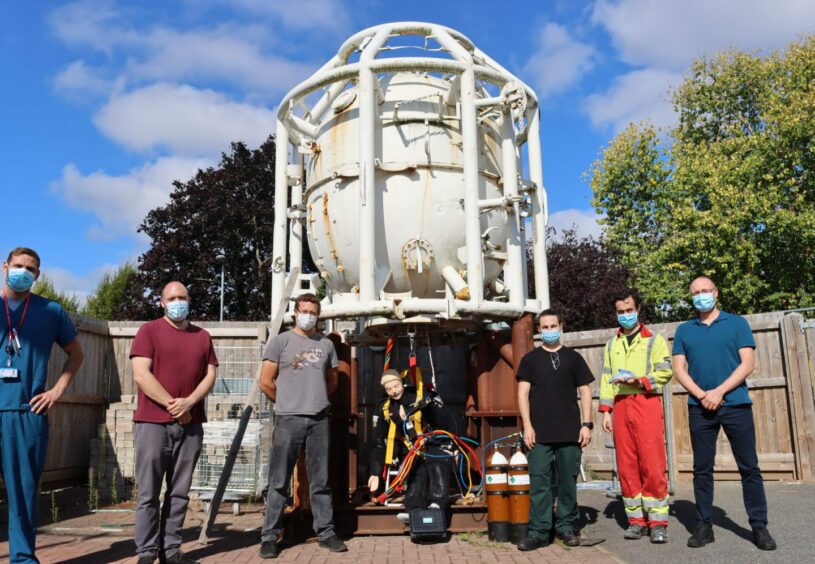
Commercial saturation diving, where divers live for up to a month under pressure in a specialised chamber system, is not a role in itself; diving is a method of getting people to a work site, principally for underwater construction, and keeping them alive underwater.
In March 1966 the first commercial offshore saturation dive was undertaken in the Gulf of Mexico. Saturation diving in the North Sea started in 1970 at Ekofisk, Norway, and diving medical assistance and research began around the same time.
One of the goals of dive medicine is to make sure that divers in saturation, wherever they are located in the world, have the same type of medical care as can be afforded to anybody else working in the energy industry. But delivering that standard of care inside a saturation system is incredibly difficult, because they are inherently very remote.
To get someone out of saturation from any depth takes roughly one metre per hour. It is important to come up slowly to avoid the risk of decompression sickness. The deepest dive depth is usually less than 300 metres. In the North Sea, the depth would be up to 180 metres.
So, for a saturation project at 120 metres depth, it could take approximately 120 hours (5 days) to come out of saturation, as a rough calculation. So, for any medical issues that might present while a diver is in saturation, you need to rely on the skills of the dive medical technicians (DMTs) inside saturation – these are divers with advanced first aid skills – and the use of telemedicine; and also on the skills of the on-board medic on the diving support vessel.
The medic is there to support everybody on the vessel. If there is a problem in saturation, the medic would focus on that patient but is of course not able to treat that patient face to face. The medic needs to work with the remote medical support, the chamber support team and the DMTs inside the chamber to look after an ill saturation diver while the chamber is being brought back to atmospheric pressure.
Some of the divers inside the chamber will have been trained as DMTs but, because incidents and illnesses while diving are not common, and despite their best efforts, they may suffer skill fade. And this makes the care of complex medical cases very difficult.
The industry has taken huge steps in the last 30 years to improve the safety of diving as a whole. However, the challenges of treating a serious illness in saturation still exist. As the diving population becomes older, divers living in saturation are still at risk of the same sort of illnesses they may have if they were working onshore or on topside – they can still have heart attacks, strokes, gall bladder problems, etc. – especially if they are living in saturation for a quarter to even half of the year.
It hasn’t been unheard of for a diver to suffer a heart attack while in the water and one of the recent questions has been looking at how to perform cardiopulmonary resuscitation (CPR) in the very confined space of a saturation diving bell.
We at International SOS have undertaken research work in this area in conjunction with Derby Royal Infirmary, where a diving bell has been situated outside their Accident and Emergency Department – to the great amazement of the land-based emergency department staff, who have never seen one before!
We hope to continue this research in June this year, once final funds have been secured to allow the research to progress. The difficulty with resuscitation of the diver in the bell is that the space is so confined that normal CPR cannot be performed.
There has also been a recent paper published in the Diving and Hyperbaric Medical Journal – ‘A review of accelerated decompression from heliox saturation in commercial diving emergencies’ by Jean-Pierre Imbert et al – looking at the history and practicalities of emergency decompression. One of the aims of this paper was to highlight and document the issues that have occurred in the past to ensure that lessons learned are not forgotten.
The saturation diving environment is very complex. Further work and research has to be undertaken in order to continue to try and meet the goal of giving divers the same level of medical care as for everybody else in the energy industry.
If you are interested in finding out more about the solutions offered by International SOS and how we can support your workforce, please contact Nicola Yates or visit my.internationalsos.com/ukhealth.